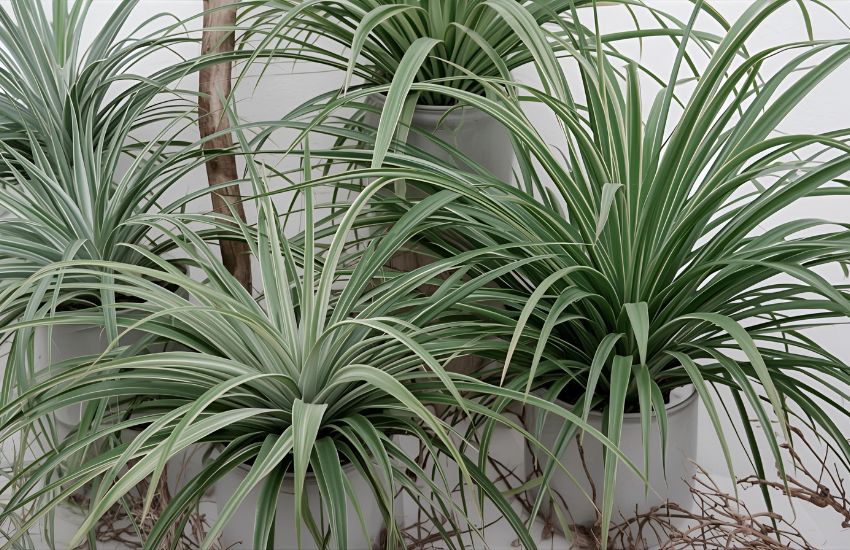Curiosity sparked by an air plant’s soil-free elegance? Whether you’re drawn to the delicate curves of tillandsia or the fuzzy charm of a bromeliad, mastering air plant care unveils a world of effortless greenery. Unlike typical houseplant companions, these epiphyte marvels absorb moisture and nutrients through their leaves, so knowing when to mist, soak, or dunk is vital to prevent excess water and rot. Proper indirect light paired with high humidity ensures optimal growth, while occasional fertilizer applications boost rootless vitality.
To grow air plants successfully, provide bright indirect light, soak or mist them regularly to maintain humidity without causing rot, and use light fertilizer occasionally. Proper air plant care, including avoiding excess water and ensuring good airflow, helps these unique epiphytes thrive as charming, low-maintenance houseplants.
In this complete guide, you’ll learn how to grow air plants effectively: from selecting the right air plant varieties and creating high humidity microclimates with moss and orchid husks, to designing stylish terrarium displays and caring for an emerging pup. Expect step-by-step advice on watering routines, light requirements, how to propagate key varieties, and troubleshooting common issues, so you can enjoy thriving air plants in any indoor setting.
How to Grow Air Plants: Water, Fertilizer, and Care Tips

As epiphytic plants known as air plants, Tillandsia species draw moisture from the air rather than soil. Unlike many plants, these air plant varieties don’t need soil; instead, their roots for support cling to driftwood, branches of mature trees, or even hanging terrariums to display. This gardener’s guide to air plant success begins with recognizing that air plants don’t need planting in traditional pots like potted plants, yet they benefit from occasional feeding.
Watering Techniques
Air plants absorb water through their leaves, not at the base of the plant. To water your air plants properly, soak the entire plant in water for 20–30 minutes every 1-2 weeks, or mist them daily if you prefer spritzes right after watering. In spring and summer, when plants will receive more light and warmer temperatures, increase the frequency of watering. Always use room-temperature tap water, and shake off excess to avoid standing water in the rosette, which can lead to rot or pest issues. After watering, keep them hydrated and allow them to dry in bright but indirect light.
Feeding and Fertilizing
Although air plants don’t rely on soil nutrients, they do absorb nutrients when you apply a fertilizer formulated for air plants or one formulated for air and tropical plants. Follow the instructions on the label and feed small air plant specimens monthly. A well-fed air plant will display green leaves and robust growth.
Light and Placement
Air plants thrive in indirect sunlight that mimics their central and south america origins. Place your air plants near east- or north-facing windows where they can absorb bright, filtered light. Avoid direct sunlight, which can scorch the foliage. Ensure they aren’t exposed to temperatures below 10 °C or above 32 °C.
Propagation and Display
When your parent plant develops a healthy offshoot or pup, you can propagate air plants by gently separating the size of the parent and its pup after it reaches at least one-third its size. Spanish moss can serve as a natural mulch in your group of plants arrangements. Ways to display your collection include mounting on driftwood, arranging in hanging terrariums to display, or grouping among potted plants for contrast.
Conclusion
Mastering air plant care opens the door to a unique and rewarding gardening experience with these remarkable epiphytic plants known as air plants. By understanding how to provide the right balance of moisture, light, and nutrients using proper watering techniques, fertilizer formulated for air plants, and ideal placement in bright but indirect sunlight you ensure your air plants thrive beautifully. Remember to avoid excess water that can cause rot, and maintain good airflow to keep your plants healthy. Whether you’re nurturing a small air plant or a mature parent plant with pups, following this gardener’s guide to air plant growth will help you cultivate vibrant, green leaves and enjoy a lively, low-maintenance indoor garden.
Now is the perfect time to put these care tips into practice. Explore different air plant species, experiment with creative ways to display them, and propagate air plants to expand your collection. Embrace the ease and elegance of air plants start growing your own thriving, soil-free garden today!
Frequently Asked Questions (The Gardener’s Guide to Air Plant Growth and Care: A Complete Guide)
What are air plants and how do they grow?
Air plants, or Tillandsia, are unique plants that don’t require soil to grow. They absorb water and nutrients through their leaves from the air. They naturally grow on trees, rocks, or other surfaces, making them versatile for indoor decoration.
How often should I water my air plant?
Watering depends on your environment. Typically, misting 2–3 times per week or soaking in water for 20–30 minutes once a week is sufficient. Ensure they dry completely afterward to prevent rot.
What kind of light do air plants need?
Air plants thrive in bright, indirect light. Avoid direct sunlight for long periods, as it can scorch the leaves. Fluorescent indoor lights can also support healthy growth.
How do I fertilize my air plant?
Use a bromeliad or air plant-specific fertilizer diluted to half strength. Fertilize once a month during the growing season to encourage vibrant color and blooms.
